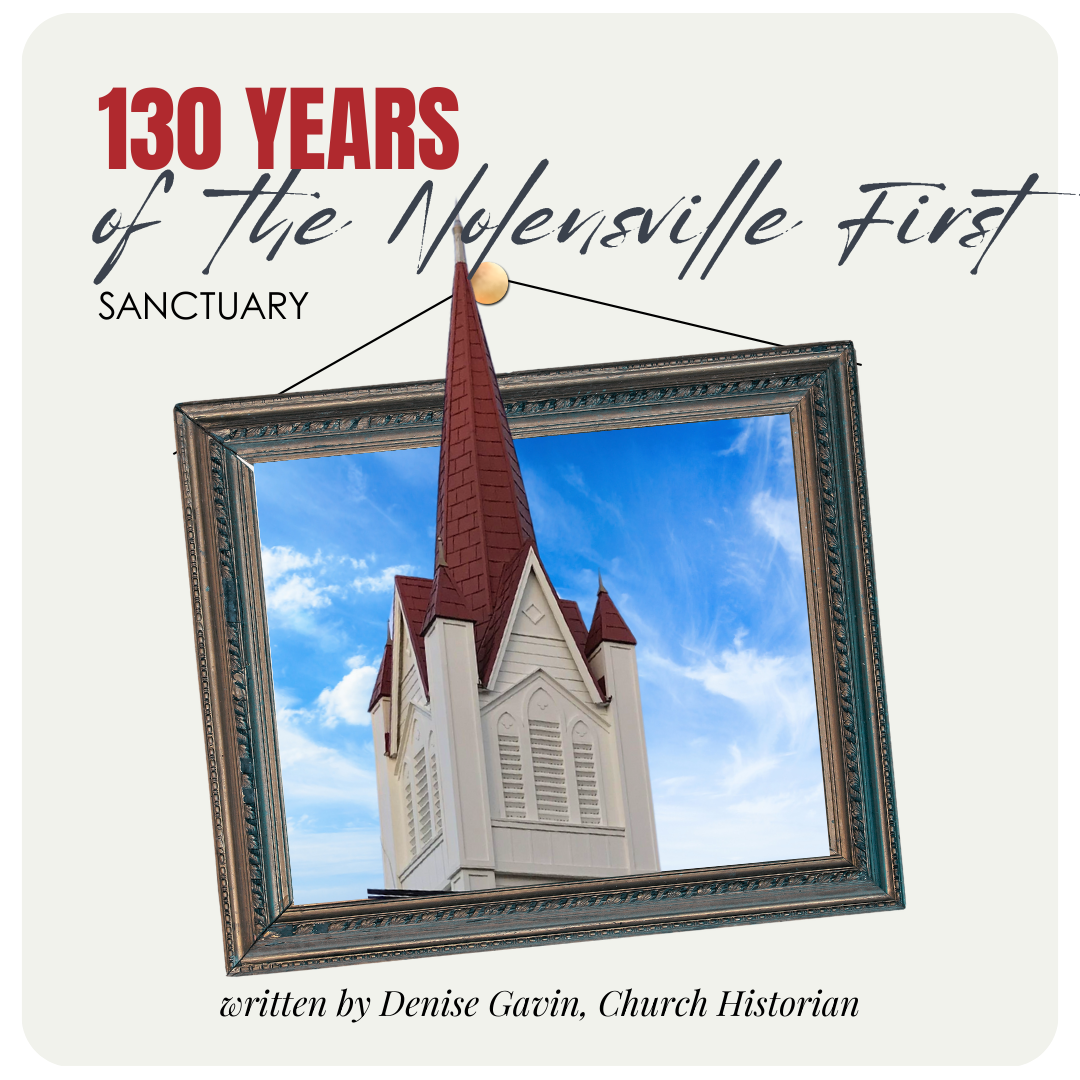Story of the Second Church Building
This first church building housed the Mount Oliviet congregation until 1853, as is noted on the cornerstone located at the right of door entering our present-day sanctuary. However, the next deed of record indicating property ownership for Mount Oliviet Methodist Episcopal Church South is not until 1858.
On April 7, 1858, William D. Bittick conveyed three acres of land for $125 to Edward J. Green, Park Street, James C. Copeland, Addison G. Owen, Isaac Battle, Francis Hawkins, William B. Johnson, William Pryor Smith and John S. Battle, the trustees of Mount Oliviet Methodist Episcopal Church South. The deed indicates “they, the trustees, shall erect and build or cause to be erected and built a house or place of worship for the use of its members of the said Mount Oliviet Methodist Episcopal Church South….” The boundaries outlined in this deed show that the church building was located about a quarter of a mile south of the village of Nolensville. The property was in front of a cemetery, often referred to as the Mt. Oliviet Cemetery, however there is no known connection between the church and the cemetery.
The second church building was a 30’ x 40’ building constructed of clapboard, wood floors, a pulpit made of walnut, benches made of poplar, and it had glass windows. The new building had a steeple and could seat approximately 300 people. A new hand-pumped organ was purchased for the church, with Ms. Flora Waller becoming a lifelong organist.
It was told that some new members wanted to change the name of the church. An older church member stated that he “would rather be caught in a graveyard changing names on tombstones than in a church with people changing the name of a church already dedicated to God”. He then walked out of the church, and nothing was ever said about changing the name again.
During the War Between the States, both Federal and Confederate troops utilized the building causing extensive damage to the structure. There are no records that the trustees filled for damages to the United States government, and the church building deteriorated beyond repair. The property where the second church was built remained in the hands of the Mount Oliviet Trustees until 1897, when on March 4, it was sold to Mr. Thomas J. Waller for $75.
With the physical condition of the Mount Oliviet building continuing to deteriorate, on January 10, 1890, a building committee was appointed and charged with the building of a new church at Nolensville. In March 1890, the committee reported that more time would be needed to complete their task, however, 1890 and 1891 passed without any action regarding the building of a new church at Nolensville. In 1892, the Trustees of Mount Oliviet Methodist Episcopal Church South again reported to the Conference that the building was in bad condition and during the Quarterly Conference held on May 27, 1893, a new Building Committee was named and in September of 1894, the property was purchased and building of the third church began. Stay tuned next month for information on the third building!
Our Church History

Our Vision:
To be a neighborhood church where people experience a life-changing relationship with Jesus in a welcoming church family.
Our Contact Info:
PO Box 249
Nolensville, TN 37135
Call: (615) 776-2815
Text: (615) 475-8108
Email: numc@nolensvilleumc.org
